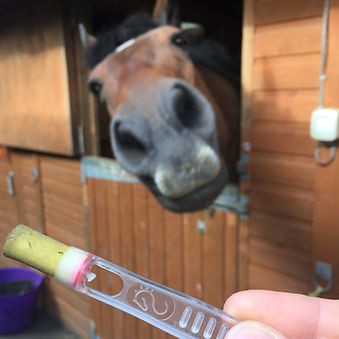
Spring In The Beehive – Time For A Bee Health Check?
Spring weather boosts honeybee activity and with it the risk of disease and colony collapse. Here’s a fast test to help hobbyist and commercial beekeepers keep a check on colony health.
It’s spring! And whether they know it or not, garden fruit growers and farmers will owe almost all of their future harvests to the growing number of enthusiast and commercial honeybee keepers.
Spring Is Here And The Bees Are Getting Busy
These early months of warmer and dryer weather, together with the increasing day length, give honeybees the boost they need to get out there and get busy.
Just as spring is time for the honeybees themselves to get active, March, April and May are months for the enthusiast, hobbyist and commercial beekeeper to really get involved in the seasonal monitoring of hive and colony health.
Know The Risks To Your Bees In Springtime
Vital as these fascinating and seemingly aerodynamically impossible little flyers are to human food security, they’re really only looking to their own growth and survival through the winter to come.
Knowing the risks ahead, and getting prepared for potentially devastating problems, is the best approach to maintaining the health of adult bees and their broods through spring and summer in preparation for autumn and winter.
Spring In the Beehive Month By Month
As March progresses, your honeybee colony will be growing quickly and might need a sugary food boost. If a check while cleaning the floor tray shows low in-hive reserves, a natural bee pollen paste might fill the energy gap and support the health of the emerging colony.
By April, the occasional drone (with its larger head and much bigger eyes) might appear as broods increase and colonies grow quickly. Now is the time to identify the queen and maybe block the queen from laying eggs in the honey ‘supers’ to ensure a future harvest of clean honey. The potential for swarming could also become a risk in the stronger hives.
Through May, the queen is laying across most of the brood box as nectar and pollen come in thick and fast. This is the time for some honey harvesting especially near oil seed rape fields, and for adding more ‘supers’. Weekly inspections will help you be ready to capture any swarming bees into another hive.
Increasing Warmth Increases The Risk Of Disease
Increasing hive activity brings increased risks to honeybee health as rising temperatures encourage predators and disease carrying parasites to become more active and more numerous.
This is why the spring months maybe the best time for enthusiast and commercial honey producers to get ahead of the growing risk by testing and responding quickly to results that indicate a present or potential health risk.
Mite Spotting: The All Important First Check
Knowing how to search out the 1.1mm to 1.7mm shell-shaped mite makes them easy to spot and count. Without the distinct body ‘segments’ typical of ants and spiders, the tell-tale shiny red-brown pinhead bodies and cluster of tiny legs help characterise Varroa destructor.
Methods for finding and counting the mites in a busy, active colony – including Natural Varroa Drop and Brood Uncapping – were tried and tested on the Advanced Beekeeping Course run by the National Diploma of Beekeeping (NDB) at Pershore College in Worcestershire.
One of their exercises was to compare different methods of monitoring the number of Varroa mites in a colony. Best-selling beekeeping magazine and international award winner, BeeCraft were invited to observe the process and its results. You can read about the Varroa project methods and results on the BeeCraft Varroa Webpage here.
Just What Does The Varroa Mite Do?
The UK Government Animal and Plant Health Agency (APHA) National Bee Unit summarises Varroa destructor as a parasite that feeds on the growing honeybee larva’s equivalent of the human liver. In their active months, adult worker bees can interact with neighbouring colonies spreading mites and worsening infestations.
The parasite drastically reduces brood resistance to a range of viruses including Deformed Wing Virus (DWV). The DWV virus either kills pupating larvae outright or, if they do emerge as adult bees, they show deformed wings and die within two to three days.
Varroa mites multiply on worker and drone larvae inside their brood cells and escape on the adult’s body as it leaves the chamber. High levels of spring and summer mite infestation can increase the risk of winter colony collapse where the majority of worker bees disappear leaving a hive that cannot sustain its queen and brood cells.
Risks of Over Treating Hives for Varroa
The National Bee Unit Best Practice Guidelines describe two types mite killing varroacides which, if used appropriately, can be effective at reducing Varroa mite infestation.
Single-action synthetic pesticides have a single, specific mode of action. Specificity brings with it the high risk of resistance leading to the reduced effectiveness appearing in the UK and Europe.
Non-synthetic pesticides have multiple actions which reduce the risk of resistance. While the NBU website recommends these ‘natural pesticides’ over synthetics, it also instructs that all applied varroacidal treatments should be recorded.
The National Bee Unit recommends treating for Varroa in all colonies of an apiary at the same time in order to reduce the risk of resistance and colony reinfection to and from nearby hives.
Monitoring And Recording Varroa Infestation
The Animal and Plant Health Agency (APHA) National Bee Unit specialises in supporting hobbyist and commercial beekeepers. The NBU online publication Managing Varroa names the spring and early summer months as key to monitoring Varroa mite infestation.
Monitoring Varroa mite infestation, and effective testing for the potentially devastating diseases they carry, can save yours and other keepers’ colonies from expensive and increasingly ineffective antiviral treatments.
Testing Your Hives Reduces Overtreatment and Resistance
Spring and early summer testing for the paralysing ABPV (Acute Bee Paralysis Virus) and the malformed-wing and body-weakening DWV (Deformed Wing Virus) before any treatment. This approach will help reduce virus resistance and might save your entire colony when infection strikes.
For more detailed information on the symptoms, effects and treatment of these viruses simply click this link to our ‘Health Check Your Honey Bees’ page.
Simple, Fast Effective: The 3-in-1 DIY Bee Health Check
Professional veterinary laboratories use a DNA test known as the polymerase chain reaction (PCR), to confirm varroa-borne infections. This is not a practical option for hobbyist, small scale and most other bee keeping enthusiasts. Fortunately, a reliable and easy to use diagnostic test kit is available ‘off the shelf’ which can give early warning of mite borne CBPV and DWV risks to hive health.
The Vetlab Supplies FASTest BEE 3T is the quick and easy diagnostic check for Deformed Wing Virus (DWV) and Acute Bee Paralysis Virus (ABPV) and includes an additional, third test, for the colony destroying Sac Brood Virus (SBV). SBV reduces larvae from healthy white to sickly yellow, then to a shrivelled dark brown or black ‘Gondola’ or ‘Chinese Slipper’ curved shape.
The Changing, Challenging World For Honeybees
In recent years, global warming has led to increased average and maximum temperatures in the UK and Ireland. Increasing hot-weather highs threaten instant, though short lived, crises for honeybee keepers due to the effects of heat and drought on bees, hives and food sources.
Rising average temperatures pose a more long-lasting danger as plant food sources fail to adapt rapidly enough to a hotter more arid environment. Worse still, predators and parasites better survive milder winters and become more active earlier in the new season.
Fighting these environmental ills may be beyond the means of beekeepers. But with an understanding of the challenge, a range of treatments which can prove effective and the pre-emptive advantage offered by modern diagnostic tests, the battle is anything but lost.
For further information on FASTestBee 3T and on the full range of animal health diagnostic kits please visit www.vetlabsupplies.co.uk or telephone 01798 874657




